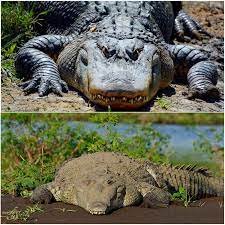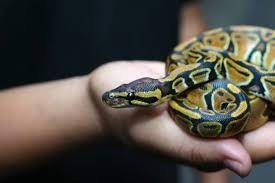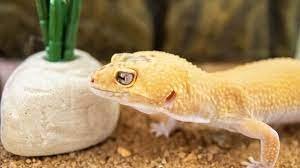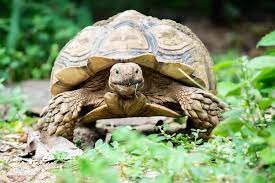Tortoises are excellent companion animals since they are amusing, easygoing, and entertaining. More than 350,000 American homes reportedly house various tortoise species. It is a slow-moving land-dwelling reptile that is easily mistaken for a turtle. However, turtles prefer a life in the water, while all tortoise species are terrestrial. Acquiring a pet of this size is a significant time and financial investment. Tortoises vary greatly in their care requirements; some are perfect for novice keepers while others are much more difficult.
Greek Tortoise

As its name suggests, the Greek tortoise can be found all around the Mediterranean and the Middle East. They are one of the most popular pet tortoises, and like the Russian, they can be purchased for around $200. Their distinctive spherical shells and gradations from golden to black make them simple to spot. The “spurs” on either side of the Greek Tortoise’s tail are what gave rise to the species’ other common name, the Mediterranean Spur-Thighed Tortoise. However, despite their diminutive size, Greek tortoises can live for up to 50 years! This species benefits greatly from time spent basking in the sun, therefore a large outdoor enclosure is ideal.
Russian Tortoise

Another species of smaller tortoise is the Russian tortoise. One reason it’s so common is that so many are brought in from the wild rather than because it breeds easily in captivity. The Russian tortoise is native to Russia, as its name suggests. However, like many other reptiles, it is also known by a variety of other names, including the central Asian tortoise, the Afghan tortoise, the Steppe tortoise, the four-toed tortoise, and the Horsefield’s tortoise. Now we know that its original range is much wider than previously thought, spanning not just Russia but also Afghanistan, Iran, and Pakistan. Its preferred habitat is at a high altitude, and during the winter it burrows underground and sleeps. Russian tortoises have a lifespan of over 40 years, are quite active, and are known for their wacky personalities.
It matures to a small size of 8 to 10 inches and is so likely to be available at many pet stores. If quick gratification is your style, then this is fantastic news, but don’t forget to take your time and plan ahead. And don’t forget that they have a 40-year lifespan!
Also, know the Types of Turtles: 33 Small & Cute Pet Turtles For Beginners
Sulcata Tortoise

One of the largest tortoise species is the Sulcata Tortoise, which lives in the Sahara Desert. One hundred and fifty pounds of weight is nothing for this huge turtle. It can grow to a length of thirty inches. Don’t be put off by their size; as long as they aren’t handled too often, they make an excellent first tortoise. The Sulcata shares its burrowing and digging interests with the Russian Tortoise. They, like other tortoises here, are herbivores, happily munching on grass, lettuce, and other leaves. Someone who does not have access to a large outside area should not start with this reptile. They require an enclosure that is 80 square feet in size, which is typically simpler to provide in outdoors. In addition, they require a substrate and a burrowing area that they can use to hide in.
Pancake Tortoise

The adorable pancake tortoise is a fun and challenging pet to keep! These pet tortoises are significantly more squat than other kinds, as their popular name suggests. Pancakes, in contrast to tortoises, have broad, flat shells. Pancake tortoises are endemic to the scrub woodlands and rocky slopes of Southern Kenya and parts of Tanzania. A time was when it was standard practice to ship this species elsewhere. This had a negative impact on wildlife numbers. These days, you can only get this species through breeders, as they are quite scarce. They show a marked preference for a similar enclosure when kept in captivity.
Leopard Tortoise

This is a species that is on the larger end of the animal kingdom. The adult leopard tortoise can grow to be between 10 and 18 inches long, making it the fourth largest species on Earth. It’s easy to see why this particular species of pet turtle is so well-liked among herpetologists. The shell’s one-of-a-kind design makes it stand out from the crowd. Typically, the shell’s basic hue is a sandy tan or pale brown. Nonetheless, the black spots give the impression of leopard spots, making the overall appearance very unsettling. Similarly, the shell is quite lofty in stature. The carapace has a sharp and rounded central region, similar to that of other tortoise species. Because of this, creating an appropriate environment may be challenging.
Indian Star Tortoise

It is possible to spot an Indian Star Tortoise just about anywhere in India or Sri Lanka. As their name implies, this breed is well-known for its star-shaped markings. Now that their natural environment is in danger, it is against the law to ship this tortoise anywhere but where it was first found. Though they are great for new pet owners, the fact that they are only available for export makes them the priciest of the beginner-friendly breeds we’ve looked at so far. Prices can range from $500 up to $4000. Finding a reliable captive breeder to acquire your tortoise is essential. A fully grown Indian Star Tortoise will measure 12 inches long, making it the same size as a Greek Tortoise. Because India experiences both wet and dry seasons, this tortoise’s ability to adapt to its environment makes it a fantastic first pet.
Marginated Tortoise

The shell of the marginated tortoise is very unique and striking. JUVENILES have a shell that is black on the outside and pearly white on the inside. The tortoise’s original coloring eventually fades to a dull grey as it ages.
The pattern of scutes on this reptile’s body is its most distinguishing feature. The marginal scutes, located at the carapace’s periphery, project outward. This creates an unusual profile for the tortoise, making it appear to be dressed in a skirt. This species of tortoise has a small wild population. In the southern regions of Greece and Italy, it is primarily found in small, isolated communities.
Red-Footed Tortoise

The first of our native South American and Caribbean species is the Red-Footed Tortoise. Their common name alludes to the color of their legs, which are often red. They are commonly known as “cherry heads,” though because their tails and heads can also be red. This tortoise is considered medium-sized since its maximum length is around 14 inches. The Red-Footed Tortoise is a great first pet because of its low cost and friendly personality. They need a cage that’s 50 square feet in size and kept at 80 degrees Fahrenheit all year long. Additionally, UVB lighting and a constant humidity of 70–80% are required.
Egyptian Tortoise

Egypt and Libya are home to the severely endangered Egyptian tortoise, also known as Kleinmann’s tortoise and Leith’s tortoise. Fortunately, a captive population already exists. It costs $900 or more to buy a captive-bred hatchling because of how uncommon they are. Due to its small size, this species is in high demand as a pet. They reach a maximum size of about 5 inches in length and 400 grams in weight, making them the smallest tortoise in the Northern hemisphere. Egyptian tortoises, which are native to desert environments, require at least 2 square feet of living space in which to survive when kept indoors.
Burmese Mountain Tortoise

This species of giant pet tortoise should only be considered by serious herpetology enthusiasts. The Burmese mountain tortoise is a giant, with a maximum length of two feet. In captivity, they can gain as much as 100 pounds. These tortoises are widely distributed in their natural habitats of Myanmar, Malaysia, Thailand, and Sumatra. Preserving wild specimens is a priority. However, in many countries, tortoises raised in captivity are easily accessible. Caring for a Burmese mountain tortoise is rather simple. They are unfussy eaters who will eat almost anything.
Summary
Most pet tortoises have a long expected lifespan of more than 50 years, so taking one in is a long-term commitment. Consider getting a shorter-lived reptile if there is any chance you won’t be able to provide adequate care for it for that long. When deciding on a tortoise breed, it’s important to take size into account.





